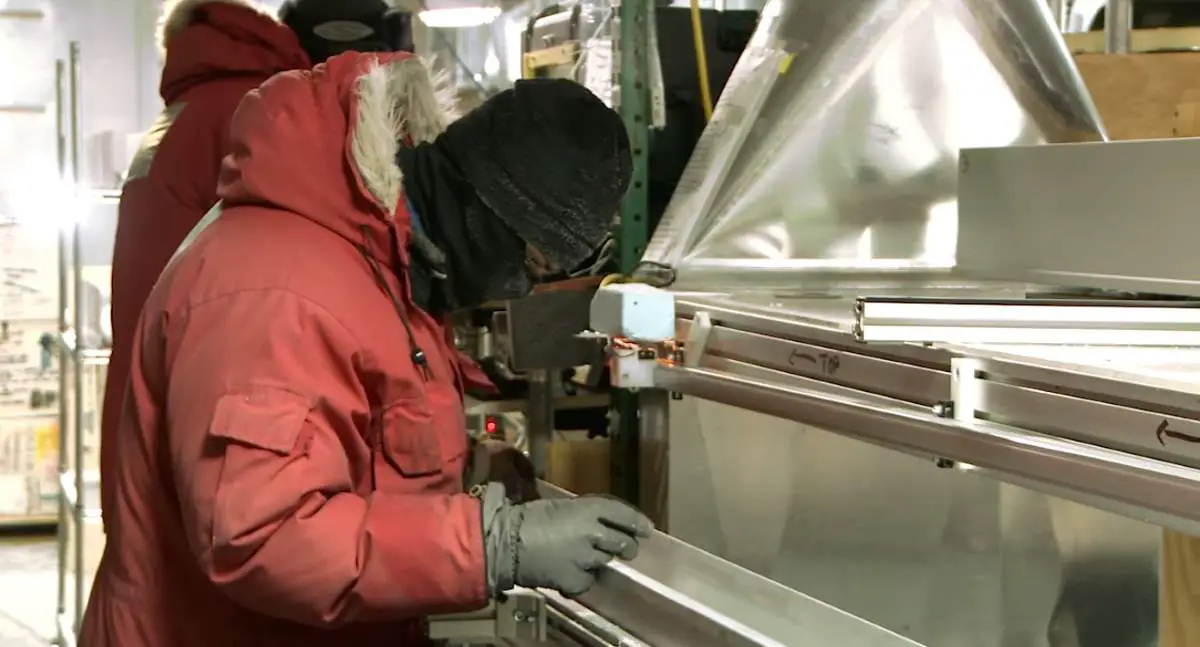The US government keeps a massive archive of ancient ice inside the National Ice Core Laboratory (NICL) in Denver, Colorado. This ice could hold important information about Earth and its climate throughout its history.
The importance of Earth’s ancient ice
Each ice core contains layers of compressed snow which are taken from the polar regions of the world like Antarctica and Greenland. Ice cores are cylinders of ice drilled from ice sheets and glaciers. Some layers are more than 70,000 years old. Scientists drill down two miles to get the oldest ice. Then, the cores are shipped to the National Ice Core Laboratory (NICL) in Denver, Colorado. There, scientists study the cores in a giant -10 °F (-23 °C) freezer (the cores are kept in a much cooler repository, at -36 °C or -32.8 °F). Today, this repository contains more than ten miles of ice cores collected from around the world.
The ancient ice cores could tell us things about climate: the air bubbles trapped in the ice can tell us the type of greenhouse gases Notes 1 in the ancient atmosphere. The ice may also contain dirt or other tiny particles that tell us when there were past volcanic eruptions. So, each ancient ice core acts as an atmospheric time capsule. With the valuable information that they contain, scientists can compare the climate conditions of the past to those of today. By studying the climate of the past, they can make predictions about the future.
Mark Twickler, the project manager says the ice cores layers are like tree rings – each layer representing a year of weather and snow. “We can tell what the temperatures were. We can tell how rough the oceans were around Antarctica. We can tell how dusty Antarctica was,” says Twickler.

National Ice Core Laboratory
The National Ice Core Laboratory located at the Denver Federal Center is the primary repository for ice cores collected by the United States from the places like Greenland and Antarctica. The facility is managed by the United States Geological Survey (USGS), and jointly funded by the USGS, National Science Foundation, and the University of New Hampshire.
NICL currently houses ~17,000 meters (more than ten miles) of ice cores collected from Greenland and Antarctica. In addition to providing a large storage facility, maintained at -36 °C (-32.8 °F), the National Ice Core Laboratory also has one of the largest sub-zero research and sample preparation spaces in the world.
Notes
- A greenhouse gas (abbrev. GHG) is a gas in an atmosphere that absorbs and emits radiation within the thermal infrared range. This process is the fundamental cause of the greenhouse effect,
which is a process by which radiation from a planet’s atmosphere warms the planet’s surface to a temperature above what it would be without its atmosphere. If a planet’s atmosphere contains radiatively active gases (i.e., greenhouse gases) they will radiate energy in all directions. Part of this radiation is directed toward the surface, warming it. The intensity of the downward radiation – that is, the strength of the greenhouse effect – will depend on the atmosphere‘s temperature and on the amount of greenhouse gases that the atmosphere contains. In order, the most abundant greenhouse gases in Earth’s atmosphere are:- Water vapor (H2O)
- Carbon dioxide (CO2)
- Methane (CH4)
- Nitrous oxide (N2O)
- Ozone (O3)
- Chlorofluorocarbons (CFCs)
- Hydrofluorocarbons (incl. HCFCs and HFCs)
Sources
- National Ice Core Laboratory web page – icecores.org
- National Ice Core Laboratory on Wikipedia
- Greenhouse gas on Wikipedia
- Greenhouse Effect on Wikipedia
- Moon Landings: All-Time List [1966-2025] - February 2, 2025
- What Is Max-Q and Why Is It Important During Rocket Launches? - January 16, 2025
- Top 10 Tallest Rockets Ever Launched [2025 Update] - January 16, 2025
